Overview of this product
Spicy Nira Tokkuri This spicy nira tokkuri from the Momoyama period was also found in the Showa period, just like the mortar.
It is extremely rare to find one that is from the sea and is still intact.
Most of them have broken necks.
As such, it would be considered fancy in modern times and extremely expensive.
This product is probably from the sea and is in very good condition.
It is thought to have contained sake or liquid.
It is called a rakkyo because it is shaped like the spicy nira plant.
In modern times, it is a luxury item used as a flower vase in the tea room.
Historical background
Many of these Bizen ware pieces were exported from the Seto Inland Sea to Japan.
These pieces sank at the time.
They were later salvaged.
They date back to the Sengoku period and are thought to have been part of a diary of daily life.
Made by
There is a kettle mark on them.
Design – Description of the Scenery
The black dots are the carbon and iron of the Bizen clay that have surfaced.
This is highly valued as a part of the scenery.
The color has a gradation called Homigawari. It is black from the top and changes to scarlet at the bottom. It is not a single color.
The black on top is gray, and the sesame seeds have weathered and peeled off due to exposure to salt water for many years, revealing the flesh color underneath, giving it its historical flesh color.
Uses
Miscellaneous notes on daily life
Modern uses
One of the most highly valued ancient Bizen pieces for decoration and as a flower vase for tea ceremonies
Characteristics of the clay
When Bizen rice field clay is put into a pot and heated,
the clay is rich in iron.
Lots of iron appears and becomes part of the scenery.
Users
Commoners, etc.
No scratches
Height 26.5cm, mouth diameter 5.6cm, body diameter 15.7cm, base diameter 10.9cm

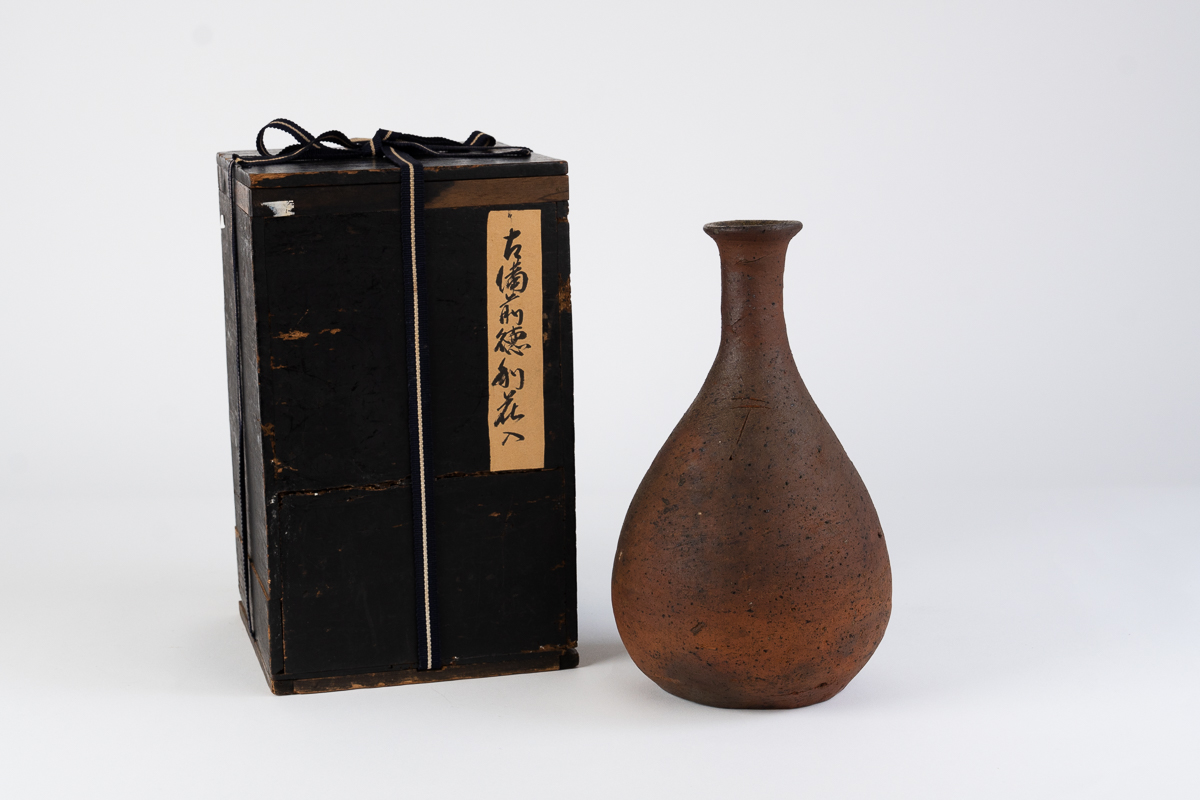
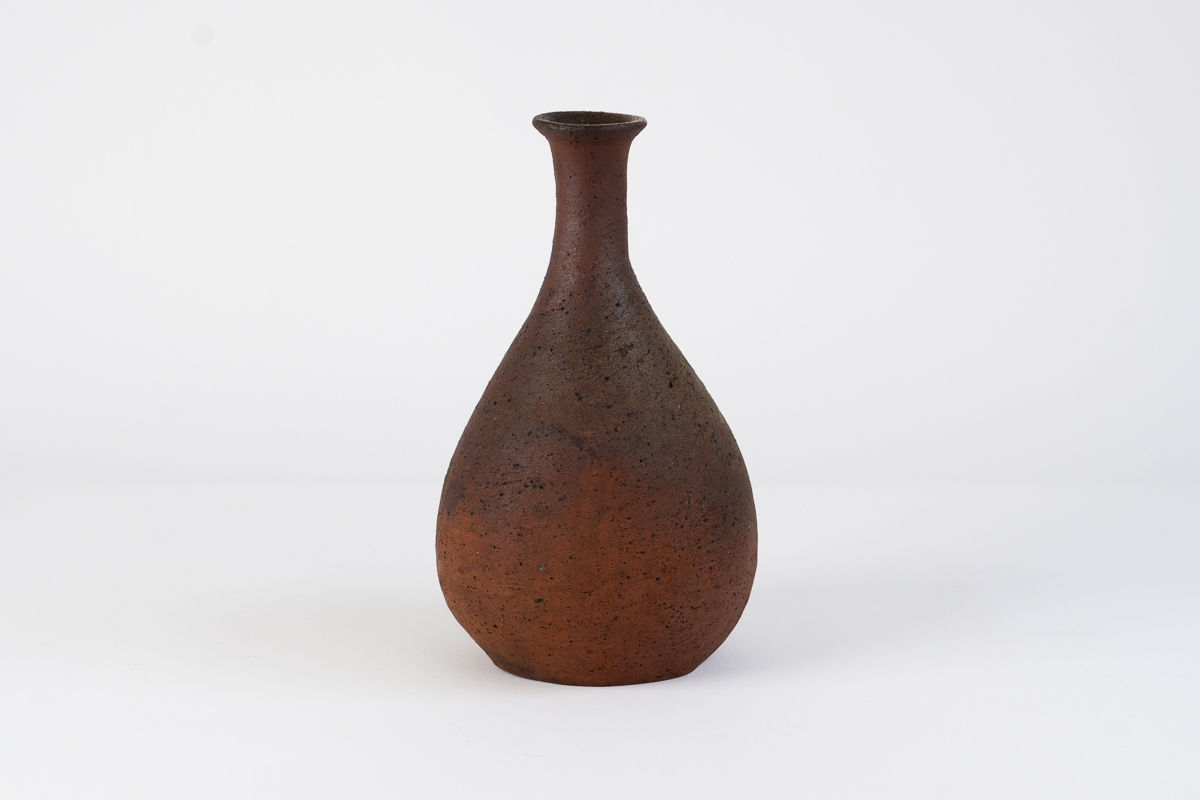
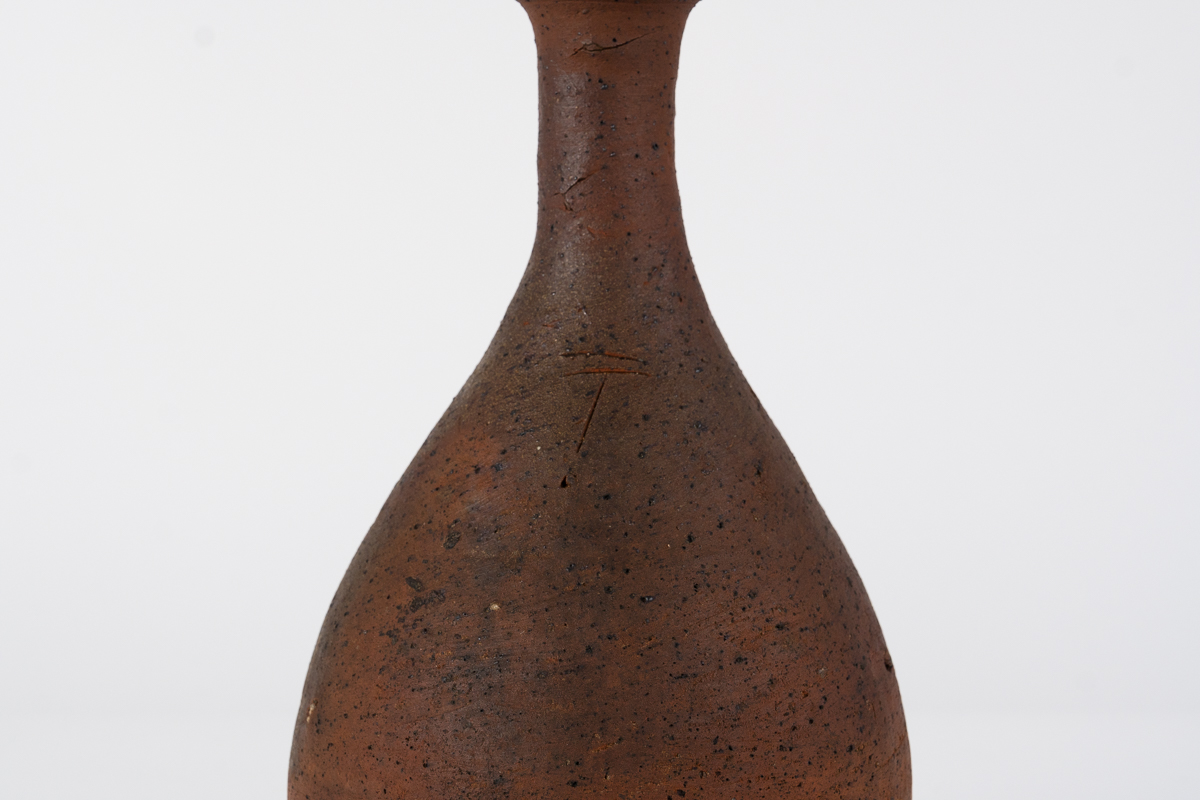
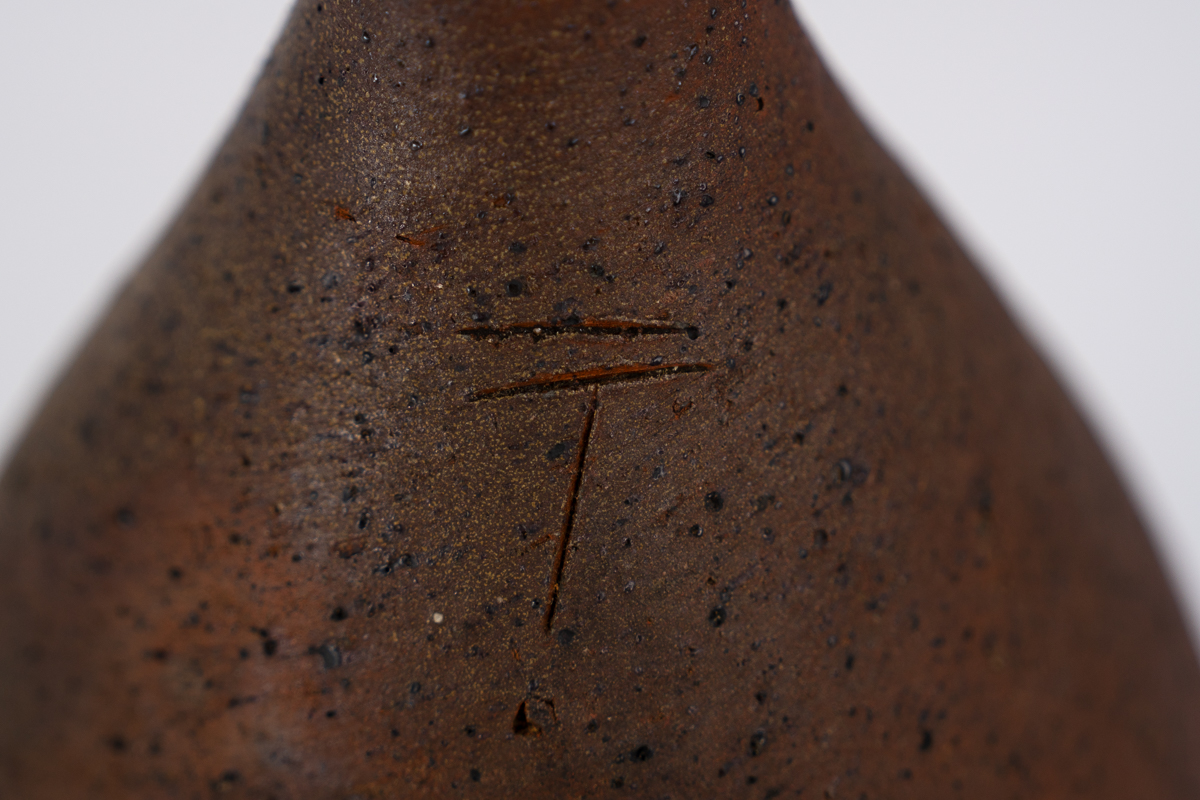
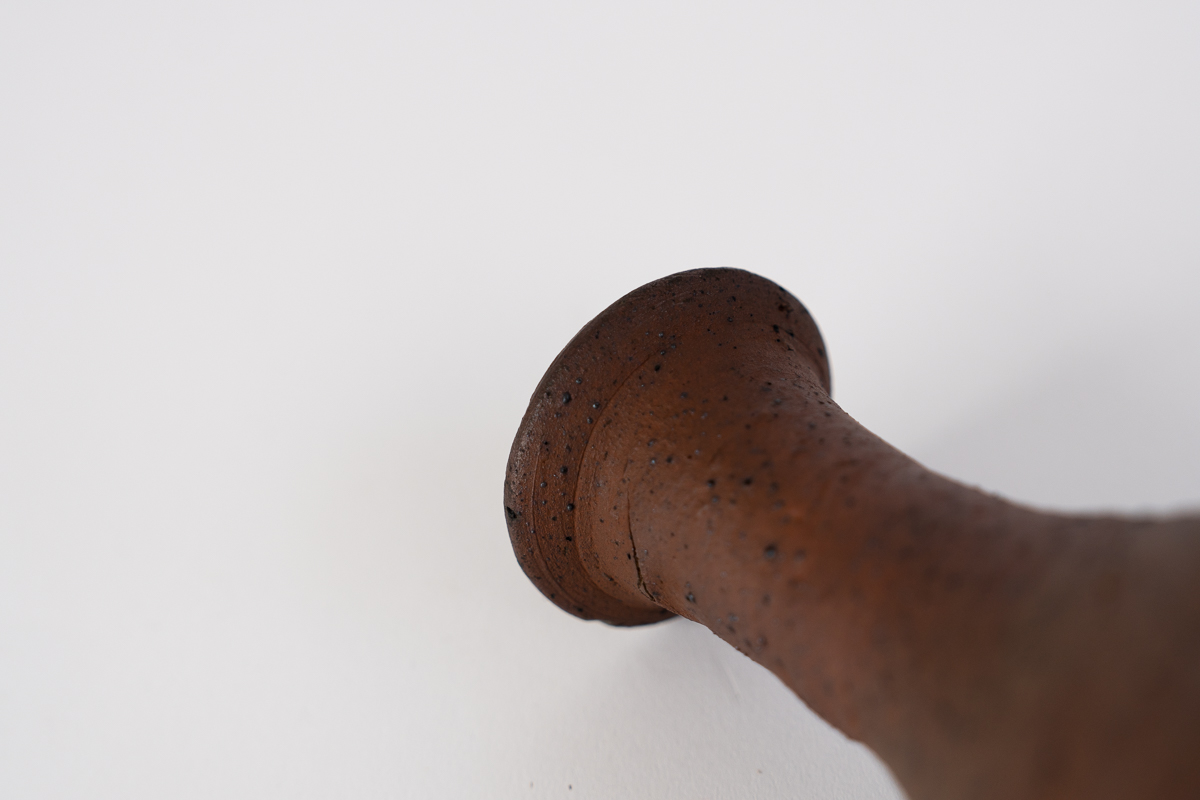
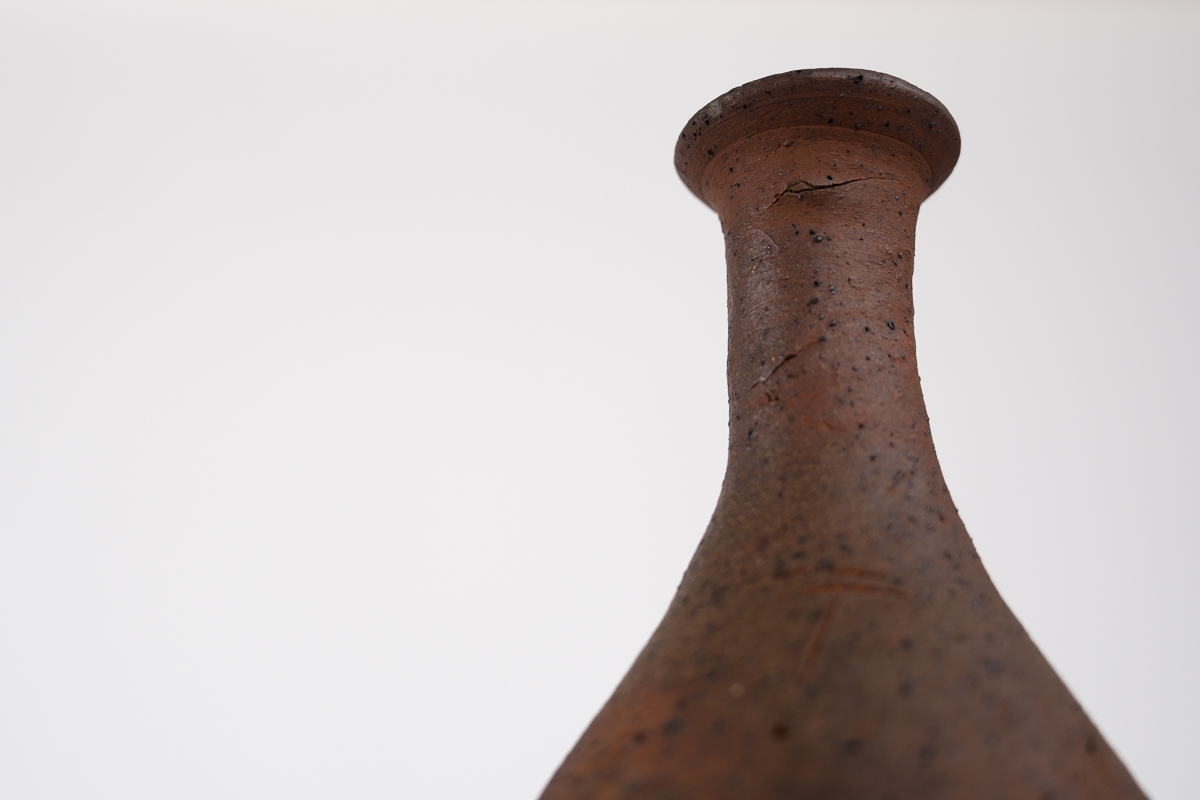
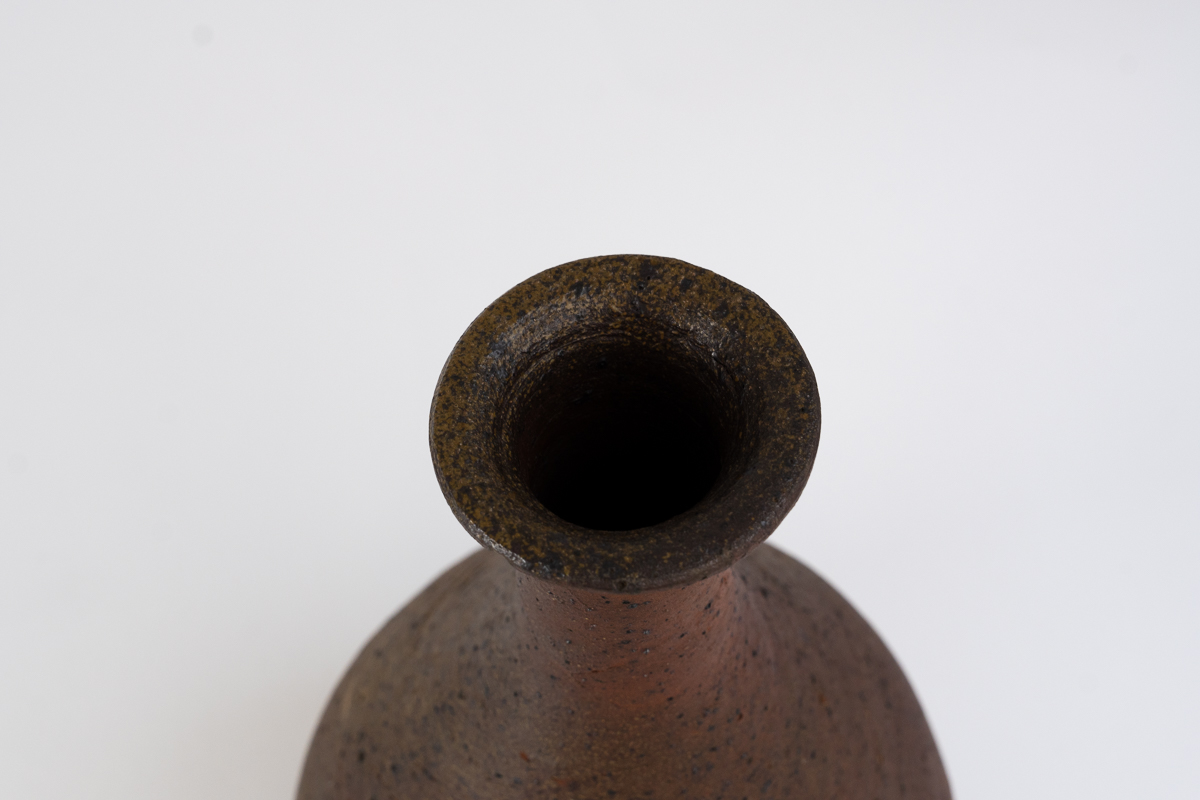
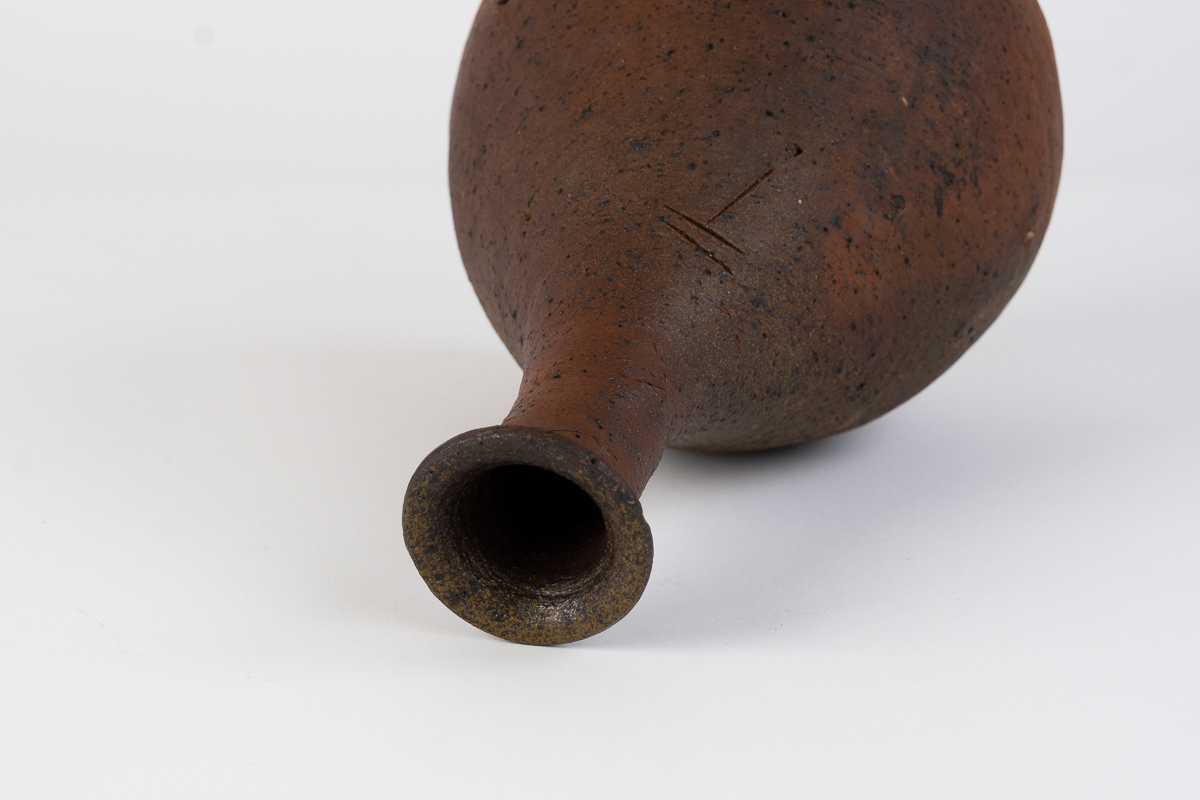
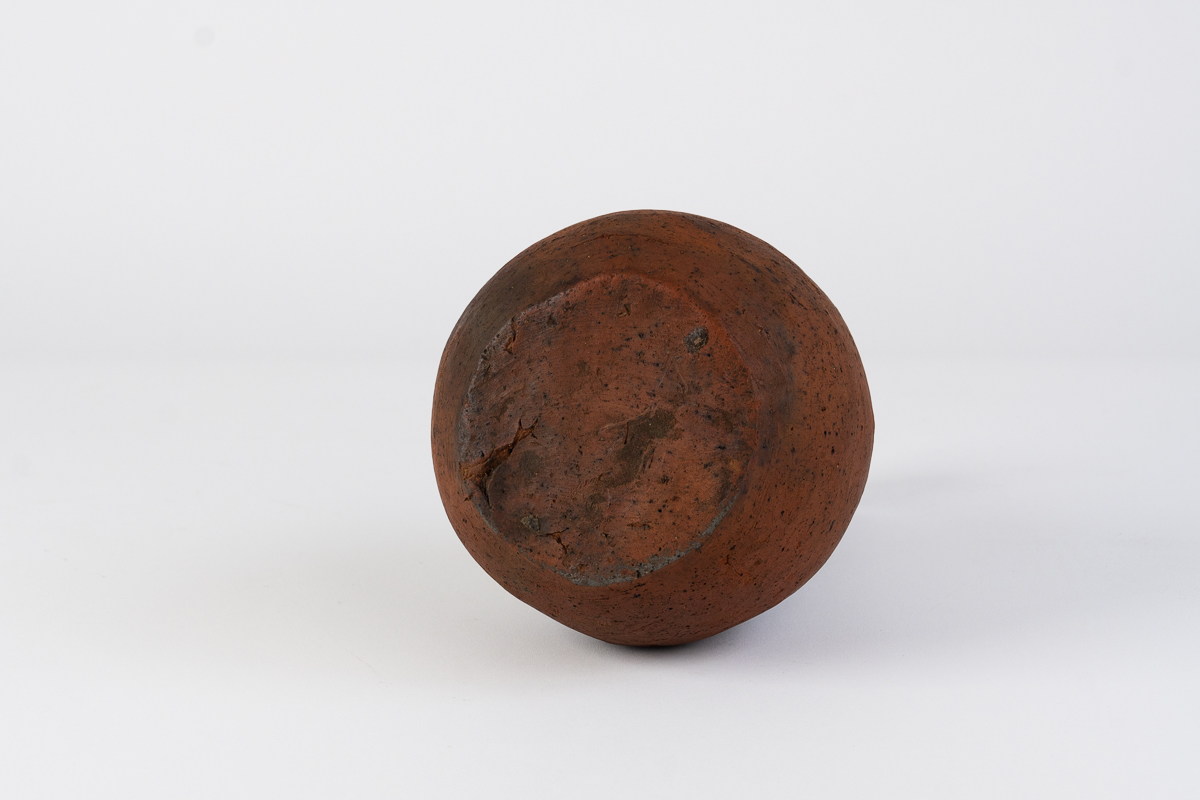
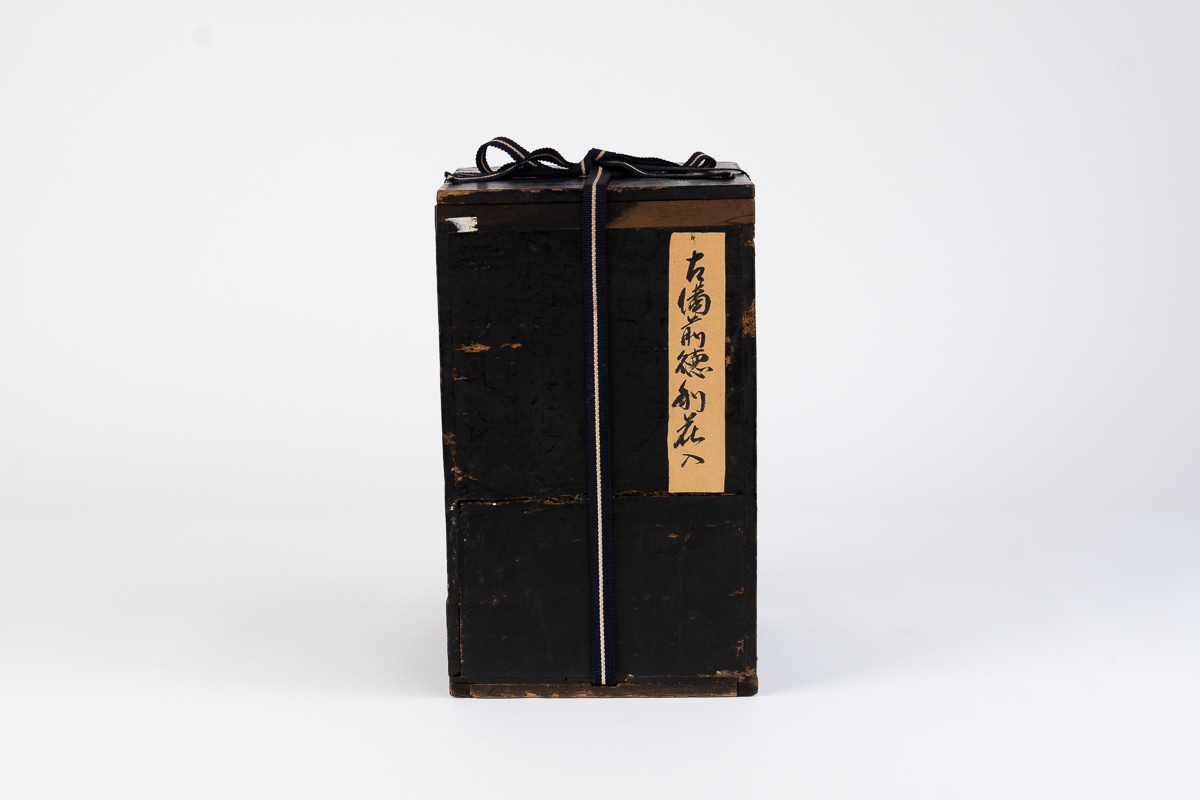
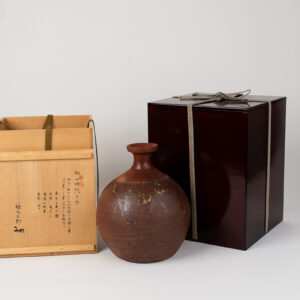
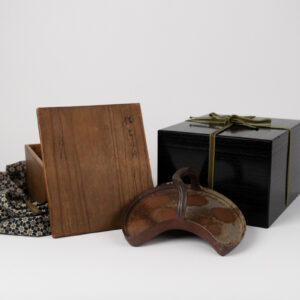
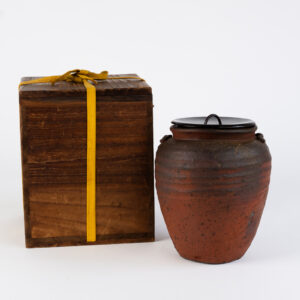
Reviews
There are no reviews yet.